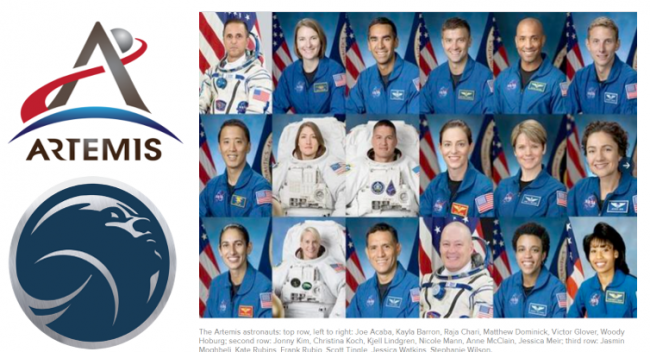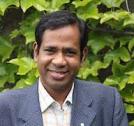Space exploration has always been an activity of great importance and interest to all of us. Space science organizations of different countries are always working on the projects related to space missions of landing space vehicles or human on Moon or Mars. NASA in this regard has an incredible success story to tell and once again the agency is working on ARTEMIS programme to go to the Moon with commercial and international partners to explore faster and explore more together with an aim that this work will bring new knowledge and opportunities and inspire the next generation. As per NASA statement, the mission to Moon is for scientific discovery, economic benefits and inspiration for new generation of explorers. The exploration to Moon will provide a proving ground to build a sustainable, reusable architecture, test technologies and resources that will take humans to Mars and beyond. Since NASA accepted a bold challenge by more than four years to accelerate its present exploration plans and establish sustainable exploration by the end of the decade, the agency has continued to gain momentum towards sending humans to the Moon again for the first time since the last Apollo lunar mission in 1972. Presently, NASA is working on a US government-funded human spaceflight program known as the ARTEMIS which has the goal of landing the first woman and the next man on the Moon by 2024 aiming landing specifically at the lunar south pole region.
NASA is seeking new partners in the ARTEMIS programme to tell the story of next human exploration to the Moon in ways that engage, excite, and inspire a worldwide audience. Though, NASA is leading the program but also expects international partnerships to play a key role in advancing Artemis programme as the next step towards the long-term goal of establishing a sustainable presence on the Moon, laying the foundation for private companies to build a lunar economy, and eventually sending humans to Mars in the times to come. The program is carried out predominantly by NASA along with international partners including the European Space Agency, the Japan Aerospace Exploration Agency, Canadian Space Agency, the Italian Space Agency, the Australian Space Agency, the UK Space Agency, the United Arab Emirates Space Agency and the State Space Agency of Ukraine.
Landing on moon earlier has been accomplished by a number of astronauts of different countries along with two US pilot-astronauts flying a Lunar Module on each of six NASA missions in 1969, with Neil Armstrong (first human to land on Moon) and Buzz Aldrin on Apollo 11 and in 1972 with Gene Cernan and Jack Schmitt on Apollo 17. No woman so far has landed on Moon but that does not mean in any way that women are lagging in space pursuits and as of March 2020, 65 women have already flown in space, including cosmonauts, astronauts, payload specialists, and space station participants. The credit of being the first woman in space goes to Russian cosmonaut Valentina Tereshkova who flew on Vostok 6 on June 16, 1963. And now with ARTEMIS programme NASA plan to land first woman and next man on Moon in 2024. At present, the agency’s powerful new rocket, the Space Launch System (SLS), and the Orion spacecraft are closer than ever to their first integrated launch. The spacecraft is also complete while the core stage and its attached four engines are undergoing a final series of tests which will culminate in a critical hot fire test very soon.
Artemis Missions: Artemis programme is tentatively scheduled to be in three parts. NASA is working towards launching Artemis-I in 2021 which will be an uncrewed flight to test the Space Launch System and Orion spacecraft together. The first mission is on track for 2021 without astronauts. Artemis II will fly with crew in 2023. In the Phase 1 plan, NASA notes additional details about conducting new test during the Artemis II mission. Shortly after Orion separates from the interim cryogenic propulsion stage, astronauts will manually pilot Orion as they approach and back away from the stage. This demonstration will assess Orion’s handling qualities and related hardware and software to provide performance data and operational experience that will be usefull for operations in lunar orbit beginning on Artemis III. During the programme, astronauts will collect samples and conduct a range of science experiments over the course. With a concept for surface sustainability an incremental build-up of infrastructure on the surface will follow later this decade, allowing for longer surface expeditions with more crew. This calls for an Artemis Base Camp that would include new rovers, power systems, habitats, and more on the surface for long-term exploration of the Moon. Throughout the Artemis program, robots and humans will search for, and potentially extract, resources such as water that can be converted into other usable resources, including oxygen and fuel. By fine-tuning precision landing technologies as well as developing new mobility capabilities, astronauts will travel farther distances and explore new regions of the Moon.
Significance of Artemis symbol
ARTEMIS meaning Acceleration, Reconnection, Turbulence, and Electrodynamics of the Moon’s Interaction with the Sun is being represented by a portrait of the Greek Goddess ARTEMIS and is illustrated in the highlights and shadows of the crescent Moon topography. Her features are abstract enough for all women who can see themselves in her. The tip of the ‘A’ of Artemis points beyond the Moon and signifies that efforts to the Moon are not the conclusion, but rather the preparation for all that lies beyond. The crescent shows missions from audience’s perspective and the crescent also visualizes Artemis’ bow as the source from which all energy and effort is sent. The trajectory moves from left to right through the crossbar of the “A” opposite that of Apollo, thus, highlighting the distinct differences in return to the moon. The red trajectory symbolizes next path to Mars. The silver background is drawn from Greek mythology where Artemis’ bow and arrows are silver.
Artemis Missions: Artemis programme is tentatively scheduled to be in three parts. NASA is working towards launching Artemis-I in 2021 which will be an uncrewed flight to test the Space Launch System and Orion spacecraft together. The first mission is on track for 2021 without astronauts. Artemis II will fly with crew in 2023. In the Phase 1 plan, NASA notes additional details about conducting new test during the Artemis II mission. Shortly after Orion separates from the interim cryogenic propulsion stage, astronauts will manually pilot Orion as they approach and back away from the stage. This demonstration will assess Orion’s handling qualities and related hardware and software to provide performance data and operational experience that will be usefull for operations in lunar orbit beginning on Artemis III. During the programme, astronauts will collect samples and conduct a range of science experiments over the course. With a concept for surface sustainability an incremental build-up of infrastructure on the surface will follow later this decade, allowing for longer surface expeditions with more crew. This calls for an Artemis Base Camp that would include new rovers, power systems, habitats, and more on the surface for long-term exploration of the Moon. Throughout the Artemis program, robots and humans will search for, and potentially extract, resources such as water that can be converted into other usable resources, including oxygen and fuel. By fine-tuning precision landing technologies as well as developing new mobility capabilities, astronauts will travel farther distances and explore new regions of the Moon.
Artemis Team
Sending humans on a round-trip journey to the surface of another world is perhaps the ultimate achievement for a space program. The first set of probables for Artemis comprising 18 astronauts are nine men and nine women who have been selected to begin training for upcoming Artemis missions to the moon. The list includes the as-yet-unnamed first woman and next man who will set foot on the lunar surface later this decade. The astronauts selected on the Artemis Team come from a diverse range of backgrounds, expertise and experience. Most of these astronauts are in the group of 30s or 40s. The oldest is 55 years and the youngest is 32 years. There is a good news for India that an Indian-American Astronaut Raja Jon Vurputoor Chari, US Air Force colonel has also been picked by NASA as one of the eighteen astronauts for training for Moon mission. The Artemis Team members with their experience in space flights is as:
- Joe Acaba (2004 Astronaut Class, 306 days in space)
- Kayla Barron (2017 Astronaut Class)
- Raja Chari (2017 Astronaut Class)
- Matthew Dominick (2017 Astronaut Class)
- Victor Glover (2013 Astronaut Class, currently aboard the ISS)
- Woody Hoburg (2017 Astronaut Class)
- Jonny Kim (2017 Astronaut Class)
- Christina Koch (2013 Astronaut Class, 328 days in space)
- Kjell Lindgren (2009 Astronaut Class, 141 days in space)
- Nicole Mann (2013 Astronaut Class)
- Anne McClain (2013 Astronaut Class, 204 days in space)
- Jessica Meir (2013 Astronaut Class, 205 days in space)
- Jasmin Moghbeli (2017 Astronaut Class)
- Kate Rubins (2009 Astronaut Class, currently aboard the ISS)
- Frank Rubio (2017 Astronaut Class)
- Scott Tingle (2009 Astronaut Class, 168 days in space)
- Jessica Watkins (2017 Astronaut Class)
- Stephanie Wilson (1996 Astronaut Class, 43 days in space)
Acknowledgement: The use of information retrieved through various references/sources of internet in this article is highly acknowledged.


